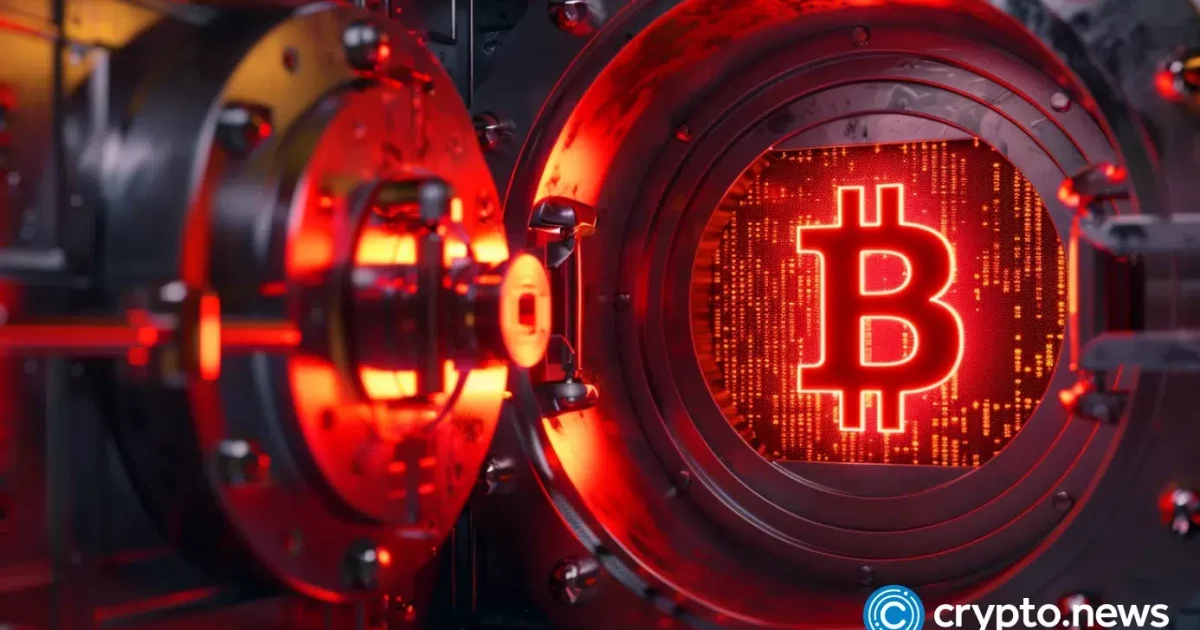Following Trump’s watershed speech at the Nashville Bitcoin conference in July 2024, Sen. Cynthia Lummis introduced her Bitcoin reserve bill, explicitly articulating that it is aimed to reduce U.S. debt. The new VanEck research reveals that if the act is adopted, Bitcoin may offset 18% of the national debt before the government gains the right to sell Bitcoin reserves.
On Feb. 21, 2025, an investment management company VanEck released a tool indicating the potential impact of Strategic Bitcoin Reserve on U.S. debt at the specified conditions. It allows the government to set the number of bitcoins purchased by the government annually, the average price at which bitcoins are being bought in 2025, and the average compound growth rate of the BTC price and U.S. debt.
The calculator tool is based on VanEck research outlining how soon the debt may be offset by the BTC reserve at the set parameters, such as the BTC price, etc. It’s worth noting that the research assumes that the Bitcoin Act introduced by Lummis is getting adopted this year without serious changes.
The research webpage contains a disclaimer that the calculations are based on past trends and don’t necessarily reflect the future Bitcoin value or the national debt amount.
What can we learn from VanEck’s research?
The research is based on the idea of the U.S. treasury collecting a million bitcoins in five years and holding them for 20 years. According to the act, during the 20 years, the bitcoins held in treasury could only be spent to cover the national debt.
Based on VanEck research made in December 2024, the U.S. will amass one million bitcoins by 2049. The total value of these bitcoins will amount to $21 trillion and will offset around 18% of the national debt, which will reach around $116 trillion by 2029, according to VanEck.
These figures will be correct at specific average compound growth rates of U.S. debt and BTC price. The VanEck researchers assume national debt will be growing by 5% per year, going from the current $36 trillion evaluation to $116 trillion in 2049. VanEck predicts that, on average, BTC value will be growing by 25% each year, increasing from nearly $100,000 to $21 billion per coin in 2049 when the federal bitcoins are no longer barred from selling.
The government may amass more than one million bitcoins as it may accumulate additional coins through seizing, donations, and other ways.
All in all, VanEck research indicates that Strategic Bitcoin Reserve will hardly pay off U.S. debt anytime soon which is in line with what Lummis claimed in July 2024 when she was talking about reducing the debt, not covering it.
To fully pay off the national debt (if the growth rates are correct), the government will need to purchase over five million bitcoins.
Could Bitcoin ever pay off U.S. debt completely?
In August of 2024, in an interview broadcast on Fox, Donald Trump assumed that Bitcoin would probably pay off trillions of U.S. debt.
Even if we don’t factor in potential debt growth (according to the Congressional Budget Office, debt may reach around $50 trillion by 2035), the U.S. government will need 36 million bitcoins at $1,000,000 (the evaluation often named by various Bitcoin enthusiasts as the near future Bitcoin price).
The problem is that such an amount of bitcoins is impossible to get as the maximum supply of Bitcoin is set at only 21 million, and its pre-programmed scarcity is seen as one of the main drivers of its value.
The company holding the biggest BTC bag is BlackRock. As of February 2025, it owns over half of a million bitcoins. Another avid bitcoinist, Strategy’s Michael Saylor, claimed that “there’s only room for one nation-state to buy up 20% of the Bitcoin network.” Note that he is not even considering a third part of the supply for any nation while he owns around half a million bitcoins.
Amassing even one million bitcoins is a hassle–no wonder a strong Bitcoin proponent Sen. Lummis gives the U.S. government five years to complete the task of accumulating one million BTC. The BTC price must reach $36 billion by 2030 so that the Strategic Bitcoin Reserve can be used to cover U.S. debt (however, most probably, the debt value will grow by that time). Even the most bullish predictions are not bullish enough to claim something like that.
Another problem is that exchanging these bitcoins for cash won’t be an easy task, as the U.S. will need to find enough buyers. The dumping of this huge amount will affect the price negatively, discounting the remaining reserves.
In general, it’s safe to say Bitcoin may be seen as a partial solution while Trump’s words about Bitcoin paying off U.S. debt are pretty baseless at the current stage.




